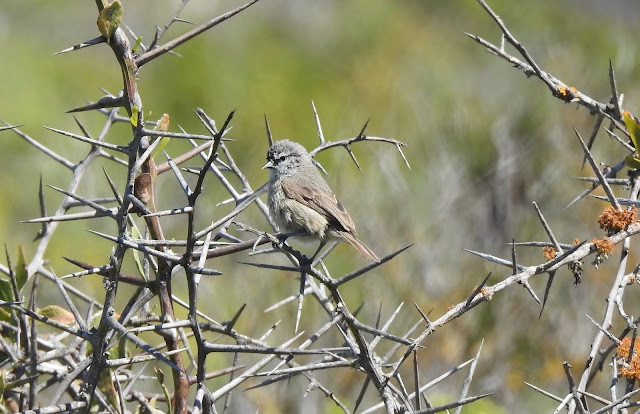Today we drove north along the western coast to the West Coast National Park before turning eastwards to the village of our accommodation, Ceres.
 |
| Today's route [approximate] |
Birding in West Coast National Park
The park surrounds the Langebaan Lagoon, which is a world Ramsar site (site’s deemed to be of global significance to wetland bird species).
Many of the wader species are Palearctic migrants, so summer is the best time to visit the lagoon, particularly in September as species return fatigued from their transcontinental travel, and March when they congregate in large numbers to feed heavily prior to undertaking the reverse journey. In such times, the birds are often changing into or out of their Northern Hemisphere breeding plumage.
The best time to observe the lagoon waders is to visit the Geelbek hide from low tide as the tide is coming in. As the water level rises the waders are forced closer to the hide until eventually they must fly off until the tide has receded once more. The smaller species depart first, with the more long-legged godwits, whimbrels and curlews the last to leave. Knot, Sanderling, Little Stint, Ruff, Marsh, Terek and Curlew Sandpiper, Turnstone, Ringed and Grey Plover, Greenshank, Whimbrel, Curlew and Bar-tailed Godwit are present on most occasions, while there is always the possibility of seeing rarer species. Little Egret and South African Shelduck may be seen alongside the waders. Flamingoes and White Pelican frequent deeper water, and there is chance of seeing Osprey. Another isolated hide west of the Geelbek educational centre overlooks a salt pan that is an excellent place to see Chestnut-banded Plover.
The reserve’s fynbos surrounding the lagoon hosts Southern Black Korhaan, Cape Spurfowl and Grey-winged Francolin, Southern Grey and Cape Penduline Tit, Ant-eating Chat, White-throated and Yellow Canary, Karoo Lark, Chestnut-vented Tit-babbler, Bokmakierie and Cape Bunting are all easily seen. African Marsh and Black Harrier can often be seen quartering the ground.
































No comments:
Post a Comment